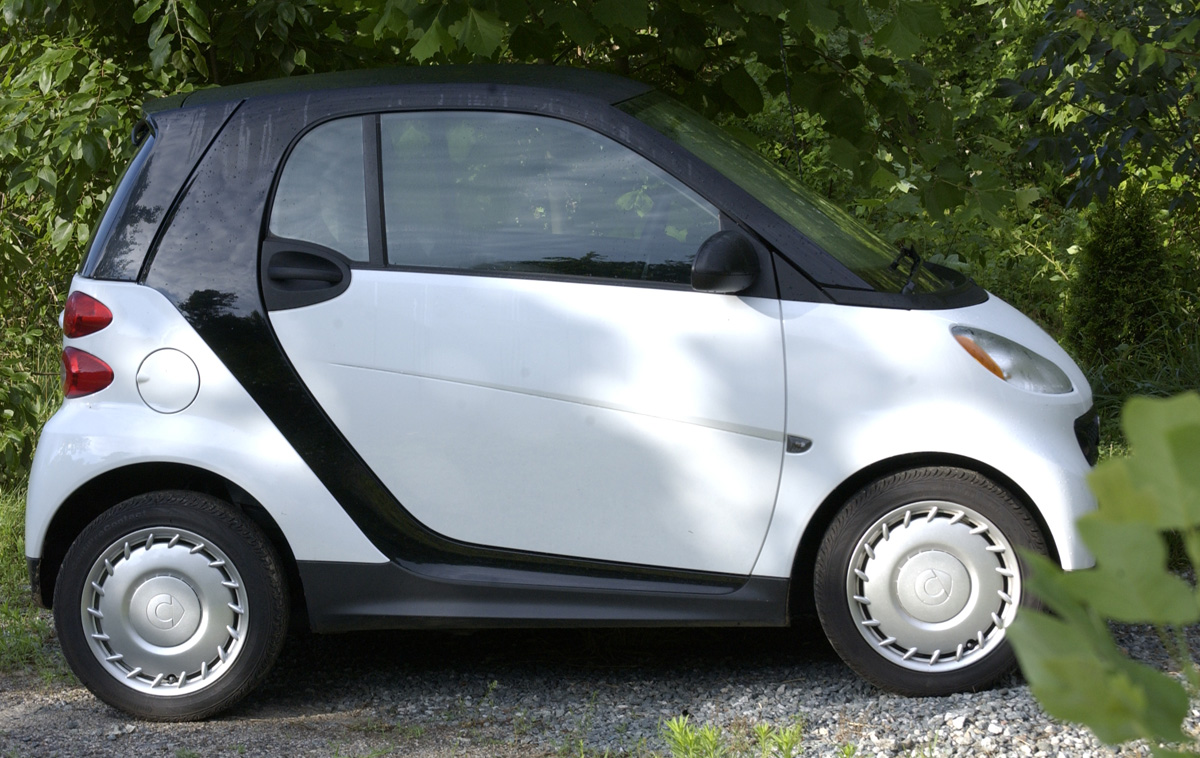I’ve had my 2013 Smart car for just over a year. It has exceeded all my expectations, and I stand by my original review from July 2012. There are a few things I can add after a year with the car.
As I expected, the Smart car’s gas mileage has gradually increased as the engine has gotten broken in. I now average about 51.5 miles per gallon. My mileage is greater than the Smart car’s EPA rating, and it’s greater than what most Smart car owners report. In fact, I hold the gas mileage record of all the 2013 Smart cars listed at Fuelly.com. I believe this is because I do a minimum of city driving (though a tank of gas will always include a couple of trips to shop in Winston-Salem); my lifestyle doesn’t require that I drive on freeways at criminal, gas-guzzling speeds; I have learned how to use (and like) the odd transmission in the Smart car; and I know how to drive.
When the time came for the 1-year service, I was afraid the cost would be high, since the Smart car is made by Mercedes. But actually the 1-year service cost only $220, about half of what I feared. Also, I find Mercedes dealerships much easier to deal with than other car dealerships, because there is much less of a sleaze factor. The salesmen and service managers seem to be overqualified, overeducated guys who ended up at a car dealership in a rotten economy.
In the last year, I have had no problems with the Smart car. I’ve had some fuel problems, but that’s not the car’s fault. Nothing on the car has broken. There was not a single thing, even a little thing, that needed to be fixed at the 1-year service.
About the fuel problem. It first occurred after I’d had the car for a few weeks. Shortly after I started it up one morning, the car started misfiring, and eventually the check-engine light came on. I drove straight to the Mercedes dealership. They could find no problem with the car, but diagnostics saved by the car’s computer was consistent, they said, with water in the fuel. The checked my fuel tank and filter and found no water. The problem cleared up on its own. I assume this is because the water had settled in the bottom of the fuel tank, and the car had ingested it all. This has happened about three more times in the last year.
My belief is that water in gasoline is more common than we think. Larger engines probably aren’t much affected by small amounts of water, but the Smart car’s engine is small and sensitive. The ethanol alcohol that is added to gasoline attracts water from the atmosphere. The Smart car’s fuel tank, like the fuel tanks on all modern cars, is designed to prevent this. But it probably happens at the service station, from condensation in the underground storage tanks. I have learned to never buy gas from country gas stations and to always go to the busiest, most modern service station available. The longer gasoline is stored, the longer it has a chance to attract water.
The anti-lock brakes have engaged only once in the last year, when a deer ran out in front of me. I wrote about that in a previous post. The stability control system has engaged only once. That was a couple of weeks ago, when I hit some standing water in the roadway at about 50 m.p.h. The stability control system indicator flashed for a couple of seconds, but I felt nothing, and the car kept going straight ahead, feeling perfectly under control.
I love this little car, and it’s actually highly convenient to drive a car that is no bigger than necessary. I just wish that more Americans could appreciate the sensible concepts and excellent German engineering that went into it.

One Comment
Your website is actually fantastic. May I connect
with you on Facebook?
Post a Comment